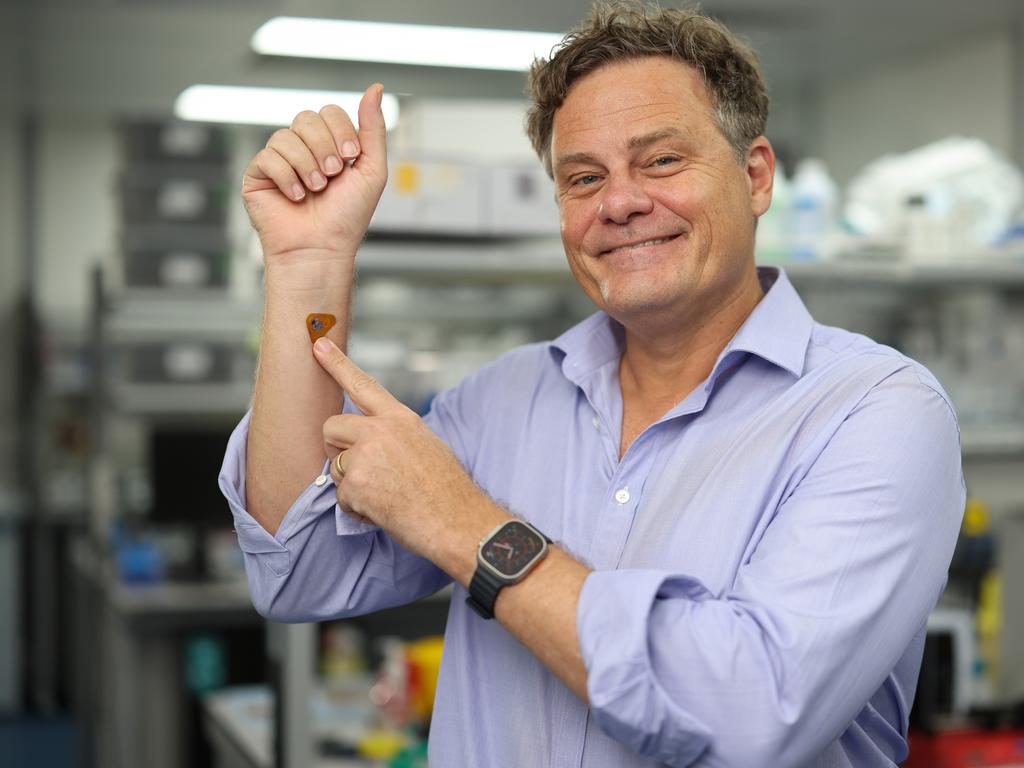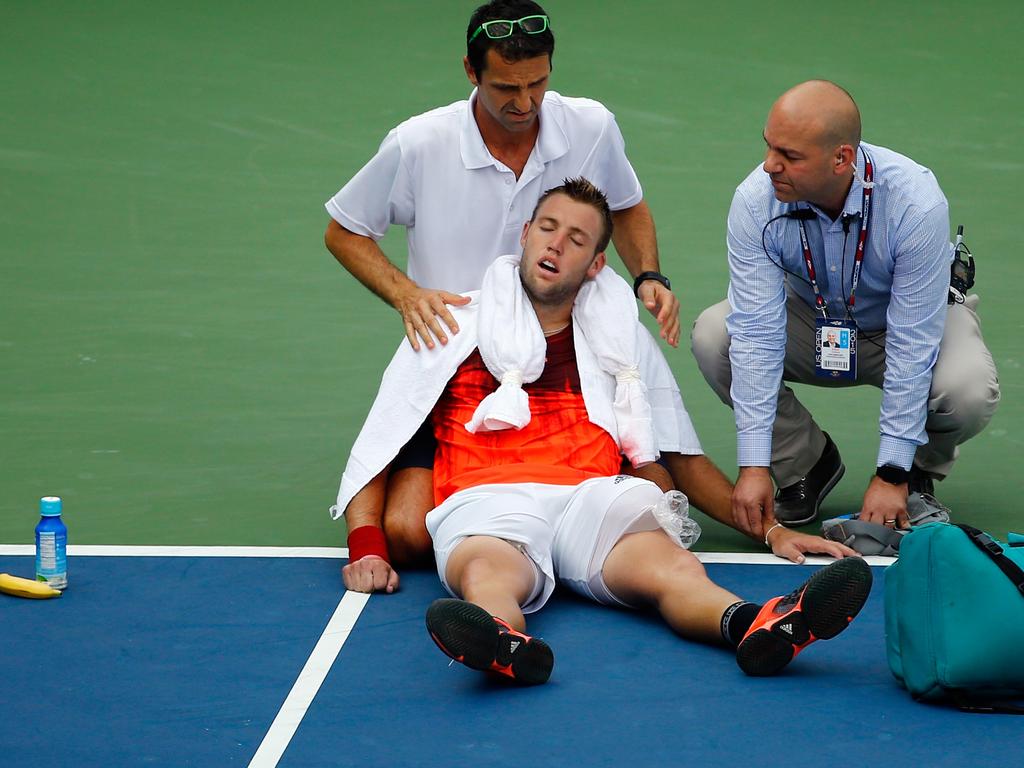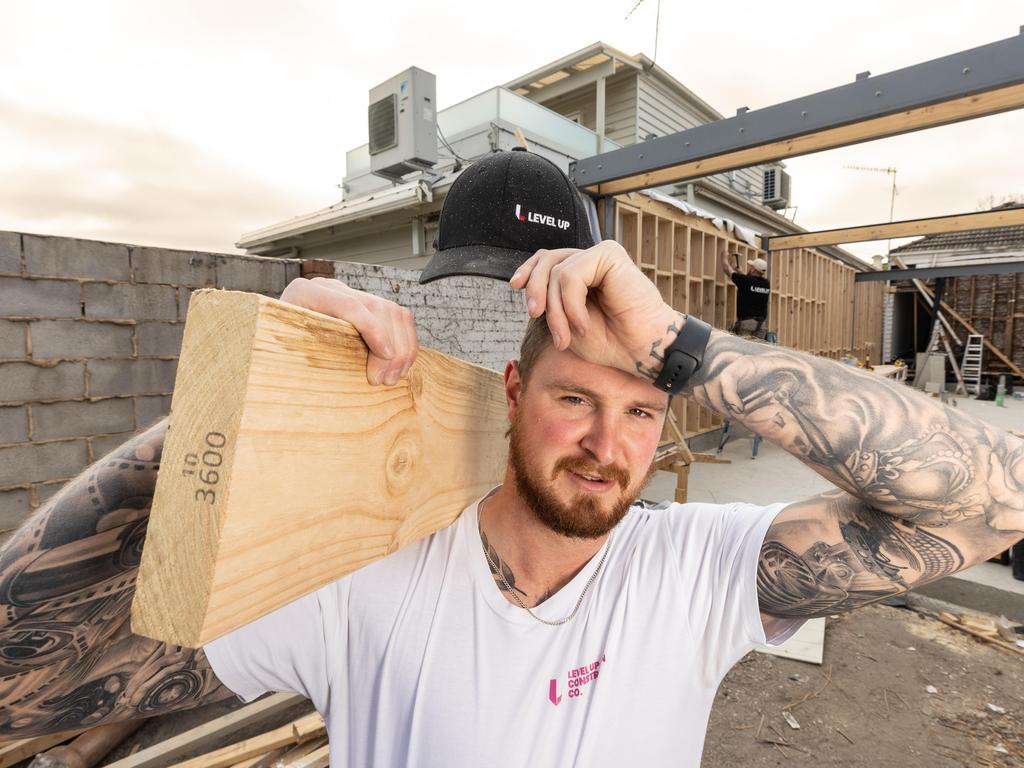New device to help Australian tradies beat deadly heat
Working outside in the extreme heat of a sweltering summer can be deadly, but Aussie inventors reckon they have a new weapon to help reduce the risk.
Environment
Don't miss out on the headlines from Environment. Followed categories will be added to My News.
A small adhesive patch advising wearers when they need to hydrate could become a standard part of tradewear – alongside the customary khaki shorts and a toolbelt – if trials of a new Aussie innovation prove successful.
Wear Optimo’s stick-on patch uses micro-sensors that gauge whether the wearer is becoming dehydrated, before relaying that information to an app.
Heat-related stress is a serious issue for people who work or play outside in the hotter months, and not one that should be underestimated: 17 Aussie workers died from it between 2000-2015, according to government statistics.
And it’s not just tradies who could benefit.
According to Professor Mark Kendall, founder of the Brisbane-based company developing the technology, it could be lifesaving in aged care homes, in firefighting, mining and the military. It could also be used in elite sports like Sunday’s NRL Grand Final in Sydney, taking place just hours after the mercury is forecast to top out at 37 degrees.

Former Formula One champion Mark Webber is an early investor in the product, and he knows the importance of staying hydrated more than most: drivers can lose four kilograms in sweat during a single race.
“Mark has talked openly about how in a race in Monaco his car physically hit the wall. His function was off because he was poorly hydrated,” Prof Kendall said.
“When we don’t hydrate, our brain shrinks, and it just doesn’t work as well as it normally would. If you’re only three per cent dehydrated, which isn’t a massive amount, that’s the equivalent on your brain of being over the blood alcohol limit, so its really significant,” he said.
But what about the body’s in-built mechanism for detecting the need for fluids – thirst? Isn’t that enough?
“It’s imprecise, and it doesn’t work quite often,” Prof Kendall said. “The thirst mechanism can kick in quite late, when you’re already very dehydrated.”
And it gets worse.

“The sensors in our body that tell us we need to drink deteriorate as we get older, so we lose the capacity to know that we need to hydrate,” he said. “From the age of 50 it goes down a steep decline.”
That’s a particular problem, as older Australians are far more likely to suffer and die from excessive heat. (One study said 69 per cent of heat-related fatalities came from people over 60.)
And in the aged care sector, overstretched staff often don’t have time to monitor hydration levels of residents, or they use insufficient methods like pinch-testing the skin to determine if there’s a problem.

“It’s quite shocking how rudimentary the methods are for dealing with dehydration, given how big the problem actually is. Our approach addresses that,” Prof Kendall said.
With forecasts pointing to more frequent and intense heatwaves, thanks to climate change, the demand for such a product could be strong. Wear Optimo has already received funding from several sources including the ANU and is part of the Brisbane Economic Development Agency’s MedTech Accelerator program to attract global investment, but Prof Kendall said more capital was needed to make the product market-ready.
“Smartwatches are cool and interesting but what we’re working on is the next generation. The field is exploding, and we’re moving as quickly as we can,” he said.
For Melbourne-based carpenter Jack Gale, a device like the Wear Optimo could be a game-changer for tradies working outdoors.
“It’d be very helpful to know if you were suffering from heat exhaustion before you felt it coming on,” he said.
Heat exhaustion had happened “plenty of times after a big long day at work,” he said.
More Coverage
Originally published as New device to help Australian tradies beat deadly heat









